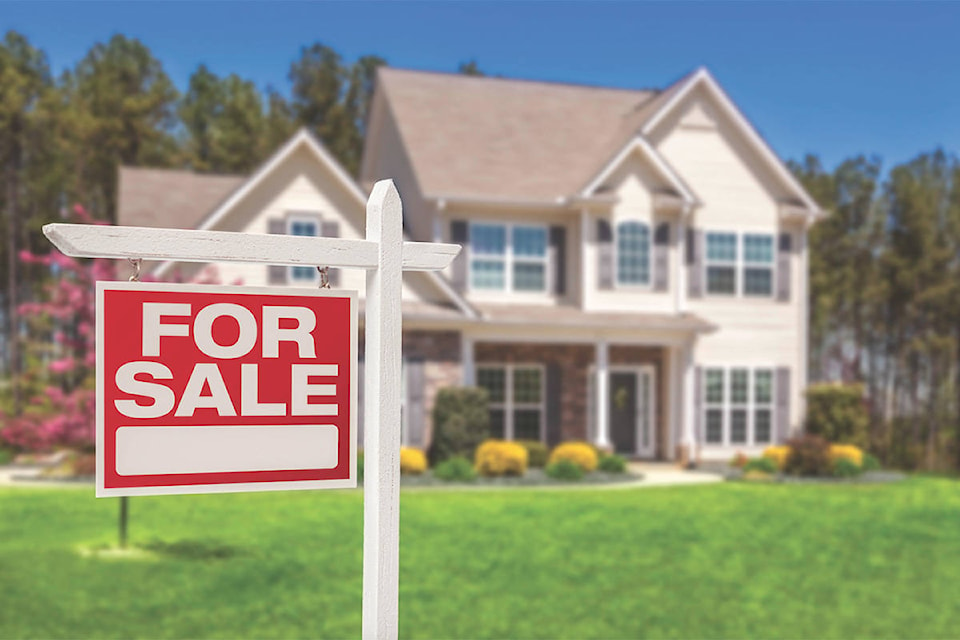Don’t jump to the conclusion that just because everybody’s assessment is jumping yours should be too.
Island residents were served notice this week that they should expect the official value of their homes to rise by between 10 and 25 per cent.
But Sooke realtor Shane Fedosenko said he does not necessarily agree with the accuracy of the assessments, because they are not done on an individual basis.
“One or two houses on a street could sell for a really high price, and this could bring all the surrounding houses assessments up, even though it might not necessarily reflect the actual value of each individual home,” said Fedosenko.
He added that the assessments are all based on sales, meaning someone could have done a lot of renovations to bring the value of their house up, but no houses sold in their area, so their assessment could be lower than what the market value of their house is worth.
Patrick Schörle of Pacifica Real Estate on teh Saanich Peninsula said he was not surprised by the data, though he wouldn’t speculate on why Sidney, Metchosin and Langford saw the largest increases in the Greater Victoria area.
“It could be affordability, it could be desirability of living in Sidney, it could be a number of factors that lead to sale prices,” he said.
“You can still find some nice townhouses that are still reasonably affordable, and yet you’ve got a lifestyle that’s pretty unique on the Peninsula,” said Schörle.
Tammy Dimmock, another realtor, agreed that the assessments are kind of “ball parked” and sometimes may not be accurate, but also said it’s not hard to believe the overall trend of increases.
She explained that there were less listings in 2017, but a lot more offers.
“We are seeing an influx of people coming from Vancouver to Victoria, and people from Victoria moving out to Sooke because it’s more affordable,” said Dimmock. “Anything that goes on the market right now is being swallowed up by multiple offers.”
Tina Ireland of B.C. Assessment said that the increases on the Island outstrip what has been seen in the Lower Mainland.
“When you look at the core of Metro Vancouver-area, so Vancouver, Richmond, Burnaby and the North Shore, there’s really no change in the single-family market in those areas, in some cases even slight decreases. But as soon as you move away from that core area, to the Fraser Valley, or Vancouver Island or the Okanagan, the single-family market is still quite strong, showing 10 to 20 per cent increases outside of the core area.”
“Those numbers may indicate that there is a movement to move away from the more expensive real estate in the core areas of Vancouver,” she said.
Schörle said he is cautious to attribute the increases to market spillover from Vancouver. While it does exist, Schörle said that 76 per cent of the transactions are still local transactions from within the area.
“The assessment for us has very little bearing to actual value,” said Schörle, who sees the assessments as as a tool for local governments to determine taxation levels.
Schörle said real estate agents price a home based on a longer list of criteria than B.C. Assessment. Schörle said that while assessors with B.C. Assessment don’t typically enter homes, real estate agents do, which he said provides a more accurate valuation because of potential differences in finishing within the home.
This trend, Schörle said, is likely to continue. The Victoria Real Estate Board reported only 1384 active listings in December 2017, scarcely more than the number of agents in the area (approximately 1300). Schörle said that in Greater Victoria, a balanced market would have around 3,500 listings.
When there’s so little available, Schörle said, that creates pressure on buyers in terms of competitiveness, so prices will remain strong. Brentwood Bay and Saanichton continues to have single-family homes, whereas Sidney is focused on higher-density products like condos. But, buyers can still find a reasonable single-family home built in the 1980s in the mid-$700,000 range, “which is something that’s getting really almost impossible when you start looking closer to Victoria,” he said.
Ireland said that an increase in assessed property value does not necessarily mean an increase in property taxes. “What’s more important is how your property changes compared to others in the community,” she said.
The assessment rolls made by B.C. Assessment are used by local governments when making their budgets for the year.
“If all properties in Sidney, say, went up 20 per cent, and the municipality required the same amount of money to run their municipality [compared to last year], you’d really see no change in your property taxes,” said Ireland.
Homeowners should be getting their assessments in the mail in coming weeks, and Ireland encourages people to go online to bcassessment.ca, where they can see the value of their property, as well as surrounding properties.
The assessments are essentially made up of two criteria, the first is a look back on what the market activity was like as of July 1st the year before, and the second is based on the condition of a property as of Oct. 31 in the same year.
When determining the value of a property, B.C. Assessment looks at characteristics such as location, neighbourhood, view, size, quality, and age.
“Those who feel that their property assessment does not reflect market value as of July 1, 2017 or see incorrect information on their notice, should contact BC Assessment as indicated on their notice as soon as possible in January,” said Ireland.
The deadline to file an appeal for an independent review of their home is Jan. 31.
